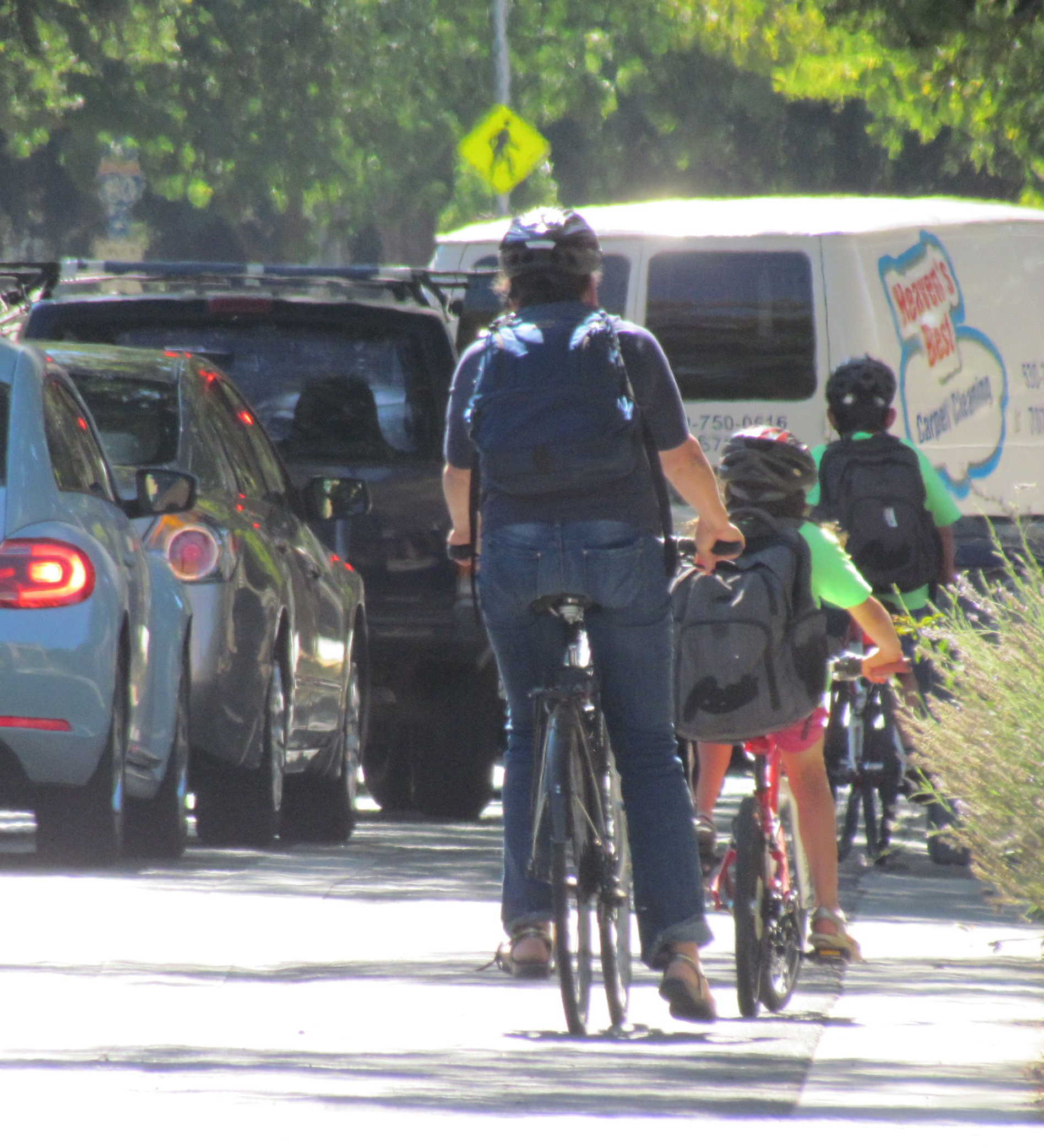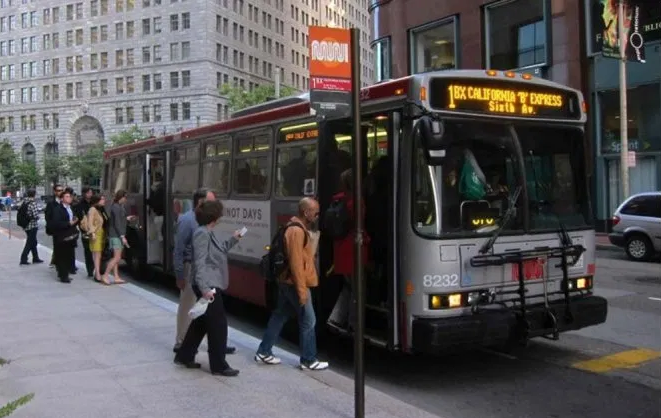Note: GJEL Accident Attorneys regularly sponsors coverage on Streetsblog San Francisco and Streetsblog California. Unless noted in the story, GJEL Accident Attorneys is not consulted for the content or editorial direction of the sponsored content.
At its meeting last week on California's climate change goals, the California Air Resources Board discussed a shift in the way it will set climate change goals through regional plans. At the same meeting, the board adopted a plan on how it will achieve new climate change targets set by state law.
And in the midst of the wonky talk, there was some traction for the idea that more focus on and investment in the role of active transportation in meeting climate change and health goals would be a good thing.
The two issues before the board were in some conflict with each other. That is, the scoping plan the board adopted outlines strategies for California to reach its goal of a 25 percent reduction in greenhouse gas emissions from 1990 levels by 2030, as set in current law. But the current plan for the regional goals sets them lower than that, in the 11 to 18 percent range.
The regional targets are called for by S.B. 375, which aims to align regional transportation plans and local land uses to help reduce driving. The regional governments have pushed for lower targets, saying that they are already doing everything within their control to meet the goals they already have.
At last week's meeting, the heads of several of the regional Metropolitan Planning Organizations, or MPOs, expressed support for the target-setting process, and committed themselves to “ambitious” and “achievable” targets.
But health and environmental justice advocates were not buying it. Ana Castro Reynoso of the Environmental Health Coalition pushed the board to require a strict emission reduction target of 25 percent for the San Diego Association of Governments, for example. SANDAG, she said, has focused its regional planning on developing and expanding freeways and has misled the public about the true effect of those plans. She said that the current target, and even the slightly higher target being discussed at the meeting, would not force SANDAG to make any of the changes needed to get people to shift away from solo driving.
“We need stronger support from the Air Resources Board,” she said.
Her testimony was supported by several other speakers, including Phoebe Seaton of the Leadership Counsel for Justice and Accountability, who spoke of the importance of urgent and ambitious targets and action, “more ambitious than we are seeing, and have seen.” Chloe Ames of Climate Resolve pointed out that without higher targets, the regions continue to plan for and invest in capacity-expanding and sprawl-inducing projects like the High Desert Corridor in San Bernardino, which is a freeway designed not to reduce congestion but to encourage sprawl, she said.
The region's transportation plans “continue to fund capacity-increasing projects instead of giving people real choices” in how they travel, said Bill Magavern of the Coalition of Clean Air.
Board member John Balmes said it's important to find a way to quantify the health benefits of active transportation, in part because of “the public health benefits that go beyond greenhouse gas reductions.” That could be a strategy to help convince people that driving less will bring them many more benefits than they realize. “Given that there is money for active commuting infrastructure,” he said, “we should take advantage of that” as the board and staff move forward on setting the regional goals.
And Bonnie Holmes-Jen of the American Lung Association suggested that the board consider taking a close look at the strategies regions are using to increase walking and biking and transit use. “What more could we be doing to boost active transportation?” she asked.
CARB staff told the board that after an almost year-long public process, they are reconsidering their approach to setting climate goals for regions. That is, instead of using mathematical models to estimate changes, they would start looking at what actions and policies regions are actually creating and acting on.
Staff member Kurt Kerperos said they are now “working towards how we want to construct this new paradigm,” and they plan to report to the board on their progress in March. They also plan to begin discussions on how to fill the gap between what the regional targets and the 25 percent reduction called for in the scoping plan adopted by CARB.
That could include a public review of a tool to measure the health and other benefits of shifting from driving to active transportation “to convince people that increasing active transportation doesn't just mean having to walk everywhere.”
“I would not like to have any implication [from this discussion] that we are backing away from the 25 percent target in the scoping plan,” said Board Chair Mary Nichols. “This is just recognizing that the way we were moving towards reaching those targets was not working. We don't have a lot of time to spend patting ourselves on the back; we have work to do,” she said.





